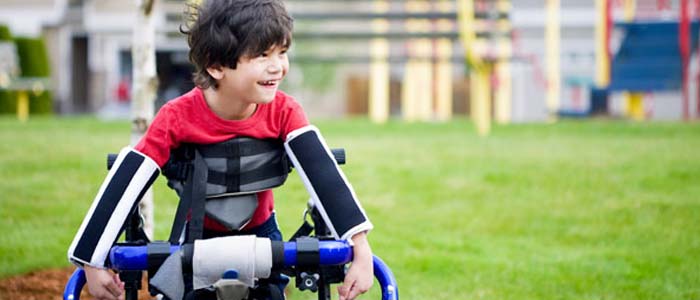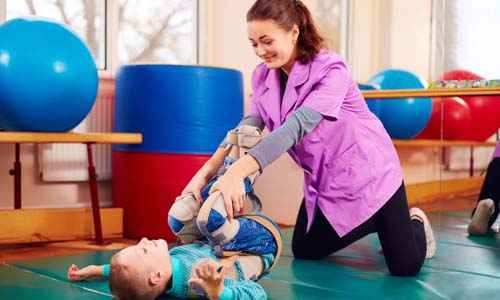Cerebral Palsy
What is Cerebral Palsy?
Cerebral palsy (CP) is a term used to describe a group of conditions affecting body movement and muscle coordination. It is not a disease. Medical dictionaries define CP as a “bilateral, symmetrical, non-progressive paralysis resulting from developmental defects in the brain or from trauma at birth”. CP can be as mild as just a weakness in one hand, ranging to an almost complete lack of movement. Sometimes the movements of people can be unpredictable, muscles can be stiff or tight, and in some cases people may have shaky movements or tremors.

What are the Causes of Cerebral Palsy?
Any damage to the developing brain, whether caused by genetic or developmental disorders, injury or disease, can result in cerebral palsy. The damage to the brain is in the region that controls and coordinates muscular action. Most often it occurs during pregnancy, labour or shortly after birth. Most cases of CP are called Congenital Cerebral Palsy because they are related to the development and child-bearing processes. The condition is not inherited. Acquired Cerebral Palsy, usually occurring before two years of age, is less common. It is usually caused by a head injury (motor vehicle accidents, falls, child abuse).
Spastic Cerebral Palsy
This is the most common form of cerebral.
Athetoid Cerebral Palsy
Uncontrolled movements that occur, most noticeable when a person starts to make a movement. People with athetoid cerebral palsy often have very weak muscles and feel floppy when carried.
Ataxic Cerebral Palsy
This is the least common form of CP. Refer to the shaky, unsteady movements and often causes problems with balance.
Mixed Types
Many individuals will not have just one type of cerebral palsy, but rather a mixture of Spastic, Athetoid and Ataxic. The rarest form of mixed cerebral palsy is a combination of ataxi and athetoid. Regardless of the combination of symptoms, mixed cerebral palsy is usually caused by head injury (motor vehicle accidents, falls, child abuse). CP can also be a result of can brain infection. Cerebral palsy, except in its mildest forms, can be seen in the first 12-18 months of life as it presents itself when children fail to reach movement milestones.

How is the Body Affected?
This is different from one person with cerebral palsy to another. Certain words are used to describe the parts of the body which are affected:
Hemiplegia
Affects the leg and the arm on one side of the body.
Diplegia
Affects both legs and arms, but legs are significantly more affected than the arms.
Quadriplegia
Affects both arms and legs and can affect muscles in the trunk, mouth and face.
What are Forms of Treatment & Management for Cerebral Palsy?
Although a condition does not progress, the brain injury is permanent. While cerebral palsy is not ‘curable’, training and therapy can help significantly. ‘Management’ is a more accurate word than ‘treatment’. Management consists of helping a child achieve maximum potential in growth and development. People with cerebral palsy can go to school, have jobs, get married, raise families and live in their own homes. Most of all, people with cerebral palsy need the opportunity for independence and full inclusion in our society.
What is the prognosis?
Cerebral palsy doesn’t always cause profound disabilities. While one child with severe cerebral palsy might be unable to walk and need extensive, lifelong care, another with mild cerebral palsy might be only slightly awkward and require no special assistance. Supportive treatments, medications and surgery can help many individuals improve their motor skills and ability to communicate with the world.
Donate Now
- Account No. 7521002100000523
- Account Name Badrinath Educational Society
- Bank Name Punjab National Bank
- Branch Name FGC Road Nangli Distt, Amritsar
- NEFT/RTGS Code PUNB0752100
